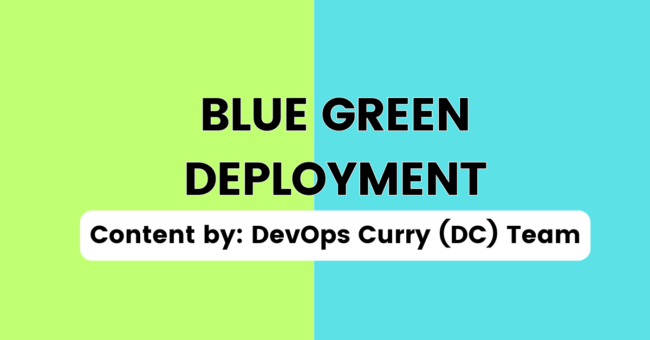This article talks about what is blue-green deployment and how it helps to reduce downtime to improve end-user experience.
Introduction to Blue-green Deployment
Frequent and quality deployments are a core principle of DevOps. However, whenever you need to deploy a new version, you must stop the current one first. This leads to significant downtime for the end user and can affect customer experience. Moreover, if any bug or error is found after release, it will require additional downtime to withdraw the updated version and switch back to the old one. This process is how newer versions of the application were deployed conventionally.
A modern approach that solves the problem of downtime and time-consuming rollback procedures is blue-green deployment. Although a bit complicated, blue-green deployment requires ‘zero’ downtime and makes rollbacks easier, thus ensuring seamless user experiences.
But how does it work?
How does Blue-green Deployment Work
Blue-green deployment involves 2 production environments:
- ‘Blue’ environment is the old/active environment.
- ‘Green’ environment is the newest environment that needs to be deployed.
As per the traditional method, the blue environment should be stopped first and the green environment should be deployed in its place. However, in blue-green deployment, the green environment is deployed alongside the blue one so that both of them run simultaneously. Then, the user traffic is gradually shifted from the blue environment to the green one. Once all of the traffic has been successfully shifted to the green environment, the blue environment is finally withdrawn. Therefore, there occurs no downtime for any user as both the old and the new versions stay active.
The following illustration depicts how traffic is shifted from the blue environment to the green environment…
Image credits: What is Blue/Green Deployment?
But I also mentioned that it makes rolling back easier in case of bugs, right? How does that work?
So, when the traffic is being shifted from the blue environment to the green one, the latter is closely monitored for any signs of errors or bugs. If any of them occurs, whatever traffic that lies in the green environment is shifted back to the blue environment. The green one is then rolled back for redevelopment and retesting. In this way, blue-green deployment makes rolling back easier in case of bugs that might have bypassed the testing phase but are evident only when actual users interact with it.
All the steps involved in blue-green deployment can be summarized as follows…
Image credits: Blue-green deployment
Benefits
The following are the main advantages of blue-green deployment:
- Rapid releases: Earlier, development teams had to wait for off-peak times like midnight to deploy new features so that the downtime affects minimum user traffic. But with blue-green deployment, new versions can released spontaneously without any risk of downtime. That said, it helps to achieve continuous delivery (CD).
- Easier rollbacks: As discussed before, blue-green deployment makes rolling back updates simpler without requiring any additional downtime. It makes the deployment process even more risk-free.
- A/B testing: A major advantage of blue-green deployment is that it allows for A/B testing. For this, a new code is loaded into the blue environment instead of the green one. A part of the traffic (usually 50%) is sent to the green environment while the other half remains in the ‘newer’ blue environment. Then both of these environments are monitored to decide which one works best and appeals to the audience more.
- Improved customer experience: Overall, blue-green deployment helps to improve user experience by limiting downtime and providing 24/7 availability.
Challenges & Limitations
Although blue-green deployment sounds ideal, it comes with a few challenges and limitations:
- Demanding: Using the blue-green deployment approach can be expensive as it requires you to keep two nearly identical environments active simultaneously. Also, it requires smooth and effortless coordination between the teams and its members.
- Set up time: Initially, setting up blue-green deployment can be a time-intensive process and may require many tries before it is perfected.
- Complex traffic routing: Moving traffic from one environment to the other (traffic routing) smoothly can be a complex task and may sometimes cause latency issues. Tools like load balancers may have to be used.
- Not applicable to all applications: Blue-green deployment is difficult to apply in the case of stateful applications. This is because if a user is active in the blue environment, his/her user session may get interrupted or lost after making the switch to the green environment.
Conclusion
Blue-green deployment is a modern solution that effectively addresses the downtime problem, ensuring a smoother and more reliable user experience. By running two environments in parallel and switching traffic seamlessly between them, it eliminates the need for downtime during updates. It comes with an added advantage of easier rollbacks which makes it suitable for teams looking to improve their deployment efficiency. While it does have its limitations, such as infrastructure costs and setup complexity, the overall benefits make it a powerful strategy for delivering continuous and uninterrupted services.

